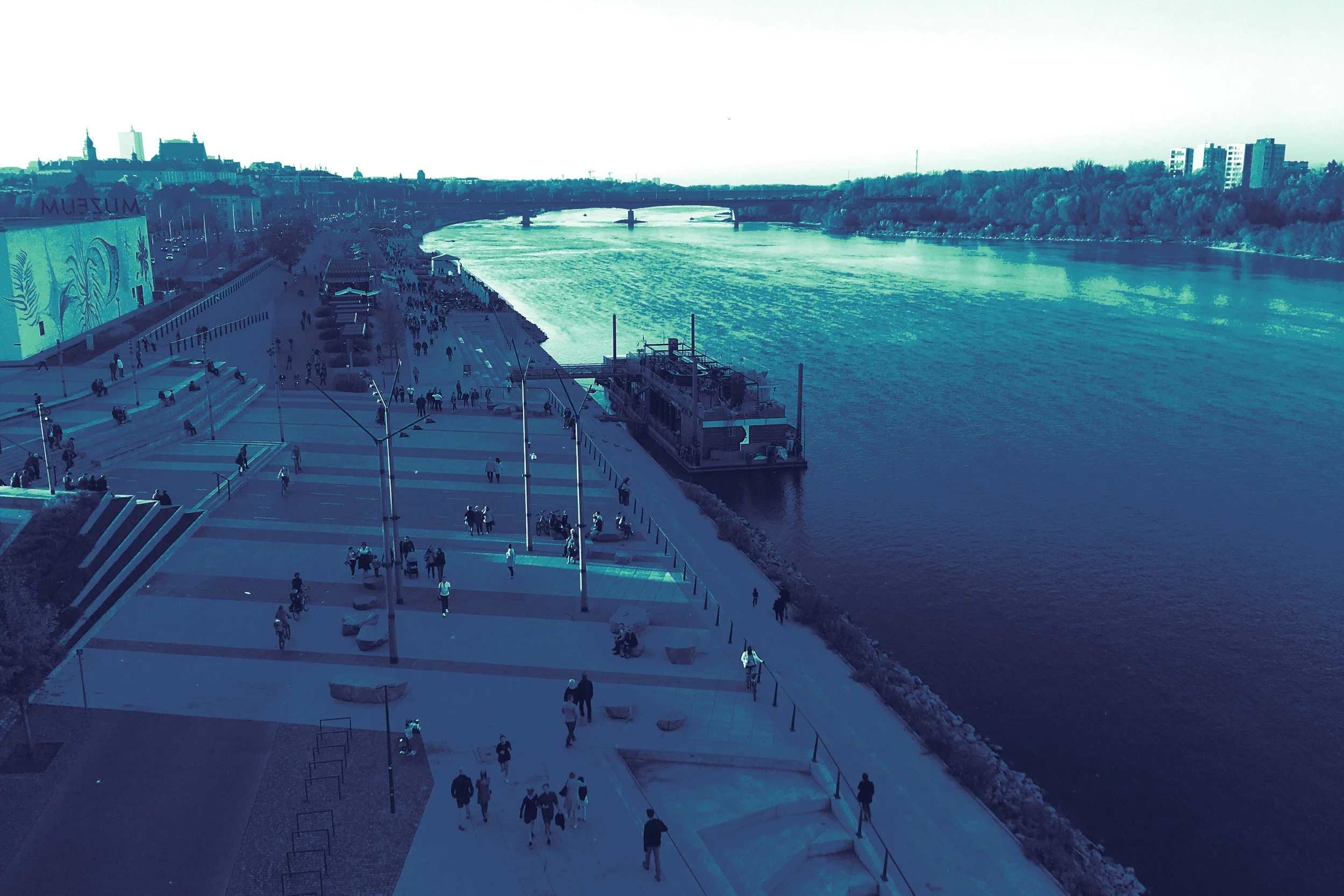NAVIGATE 2019 WEBSITE
RETURN TO 2023
CONFERENCE
Keynote Speakers
Plenary Speakers
Program
Welcome Reception
Conference Dinner
”Amphibious Warsaw” Field Trip
Registration
For Authors
Topics
Posters
Publication
Important Dates
Policy Symposium (GAPS)
Issue & Proposal
Schedule
Registration
LOCAL INFORMATION
Travel & Transportation
Accommodation
Amphibious Warsaw
Sponsors
Become a Sponsor
2019 Sponsors
ICAADE 2019 in Media
COMMITTEES
Executive Committee
International Steering Committee
Local Organizing Committee
Scientific Review Committee
CONTACT US
PREVIOUS CONFERENCES
Amphibious Warsaw
Warsaw’s downtown contemplates the passage of the Vistula River right in its heart. The closeness with the Vistula draws in more and more visitors and is an opportunity to offer leisure and entertainment options, however not without its challenges. The Vistula is a semi-wild river with important environmental value – floodplains and its sandy beaches and islands have an invaluable importance to preserving fauna and flora. But its high-water fluctuations affect the complexity of the built environment around it, as bridges and riverbank infrastructures and other water intake structures are bound to building restrictions, due to high flood risk.
Recently the Warsaw Municipality has chosen to apply some new amphibious planning and design, so we’re bringing three prominent examples of amphibious architecture for you to get to know a little more about some projects in the city:
Beach Pavilion
This Sanitec Koło Beach Pavilion designed by Ponadto Grupa Projektowa & Pro Arte 11 Studio is located near two landmarks in the city - the Poniatowski Bridge and the National Stadium. The pavilion’s design highlights the walking nature of the riverside forests, visited by pedestrians, cyclists and beach users. The architects designed it so that the beach pavilion would serve as a link between the street side and the Vistula beach. At the same time, it blends with the terrain topography without eliminating the surrounding trees and disturbing the natural image of the riparian forest. Because of the changing water level, wetlands, and main access from the street level, the building was built on piles and raised above the beach. The overwater part of the pavilion can operate even during the exceptional floods. In the bottom part, prone to inundation, the sanitary rooms were designed to be dismantled, and the lower part of the ramp to be lifted by a crane. It was put to test during the heavy summer flood of 2014 and it work perfectly.
Boulevard Pavilion (a can-float)
Part of the revitalization program of the left bank Vistula Boulevard, a series of can-float pavilions were designed parallel to the riverbank and spread irregularly along the 2-km-long waterfront terrace. The pavilions by RS Architektura Krajobrazu & Artchitecture are designed as a part of a larger landscape project and were meant to rather blend into the surrounding than to distinguish with their unified modest modern look. The terrace where they are located is prone to rapid inundation, so during flooding the pavilions are raised by the flood water, monitored and held in place allowing vertical, but preventing horizontal movements and can be further disassembled for relocation in the case of a larger flood.
Water Tram Floating Pier
Also part of the Vistula Boulevard program, the Water Tram Floating Pier designed by BP Szumielewicz i Pawłowski & Navicentrum brought a solution to the river’s difficult mooring conditions on the boulevard due to high water fluctuation. Three units of the pier will be located in the northern part of the new boulevard, along the Old Town (because it is characterized as an inland ship, it was allowed to be located very close to the historical Royal Castle), and one in the southern end, in the proximity of a metro station. The piers aren’t only resilient to high water fluctuations, but also to very low water levels. If need be, the structure can sit safely on the river bottom.
The three examples illustrate the diversity in the technology of public buildings situated in the Warsaw floodplain. All of them are similar in terms of their size, function and construction time, besides being selected through architectural competitions. Interestingly enough, these three buildings do not differ too much in their appearance. The main difference is the technique implemented to resist flood.
These flood resilient buildings capable of resisting the violent inundation as well as staying in service during low water levels are still unusual solutions in Poland. Having this in mind, the scale of the amphibious development is quite impressive, especially when considering a number and size of can-float pavilions built and approved in Warsaw. What is even more important is the openness of local municipality to amphibious design paradigm of living with the river cycle.
Łukasz Piątek, Magdalena Wojnowska-Heciak, Lia Bezerra






